Belíssimas fotos

E estes não foram os únicos caças testados pelos alemães. Tem mais, muito mais. Vocês conhecem o Mig-9? E o Mig-15? Acho que vocês ficarão surpresos em saber que que este projetos tem origem em modelos alemães capturados ao final da 2a Guerra

In late 1942, Focke-Wulf engineer Hans Multhopp headed up a design team that started aerodynamic studies for a new turbojet fighter. This culminated in 1945 as a fighter project known as "Huckebein" (a cartoon raven that traditionally makes trouble for others), also known as Project V (Project VI in some references) or Design II at Focke-Wulf and later to be given the designation Ta 183. The Ta 183 had a short, squat fuselage with the air intake passing under the cockpit and proceeding to the rear where the single He S 011 turbojet was located, although the first three prototypes were to be powered by Jumo 004B jet engines. A provision was made in the early studies for the aircraft to be equipped with a 1000 kg (2205 lbs) thrust rocket engine to assist interception duties, with the fuel for a 200 second rocket burn being located in underwing drop tanks. The wings were very thin, swept back at 40 degrees and were mounted in the mid-fuselage position. A tapered main wing spar constructed of two duraluminum I-beams with steel flanges formed a torque box, with the attachment at the fuselage consisting of a single bolt. The wing structure was completed by adding bonded wooden ribs with a plywood covering. Each wing panel contained six fuel cells totaling 1565 liters (345 gallons). The huge fin was swept back at 60 degrees, with the tailplane mounted on the top of the fin. The tailplane also exhibited considerable dihedral. Wing elevons and the rudder provided control, the tailplane control surfaces only being used for trimming. The flaps and landing gear were operated hydraulically. The pilot sat in a pressurized cockpit with a bubble canopy which provided excellent all-around vision. Four MK 108 30mm cannon was envisioned for the production Ta 183 armament, also a bomb load of 500 kg (1100 lbs) could be carried. This could include one SD or SC 500 bomb, one BT 200 bomb, five SD or SC bombs and even a Rb 20/30 camera. The weapons load would be carried in the equipment space in the bottom of the fuselage and thus partially protrude about halfway from the fuselage.
On Febuary 27 and 28, 1945, the Emergency Fighter Competition conference was held by the OKL (High Command of the Luftwaffe), and the Ta 183 was chosen to be developed and produced. There were to be sixteen Versuchs (experimental test series) aircraft: the Ta 183 V1-V3 to be powered by the Jumo 004B turbojet, pending delivery of the He S 011 jet engine, the Ta 183 V4-V14 as 0-series preproduction aircraft and V15-V16 as static test aircraft. The maiden flight of the first aircraft was planned for May/June of 1945, and was to test both the Design II and Design III tail configuration. The first production aircraft were scheduled to be completed by October 1945, but no examples of the Ta 183 were completed because on April 8, 1945 British troops captured the Focke-Wulf facilities.
After the war, the Ta 183 story continued. The Soviets found a complete set of plans for the Ta 183 in Berlin at the RLM offices, and began construction of six prototypes in March 1946 by the MIG design bureau. On July 2, 1947, the first Soviet-built Ta 183 took to the air powered by a British Rolls-Royce "Nene" turbojet. They discovered that the original Ta 183 design needed either automatic leading edge slots or wing boundry layer fences to alleviate low-speed stalling. Also, as a compromise between high-speed and low-speed flying, the horizontal stabilizer was moved approximately one-third down from the top of the vertical tail. The modified Ta 183 first flew on December 30, 1947 and in May 1948 was ordered into production as the MIG 15.
Meanwhile, Kurt Tank (head of the Focke-Wulf design department) had left Germany to go to Argentina in 1947 at the invitation of President Juan Perón. There Tank was to build a tubojet powered fighter for the Argentine Air Force, and he decided to build the Ta 183. Tank made several changes to Multhopp's original design, mainly the wing being changed to a shoulder mounted position. The first flight of the "Pulqui II" was made on June 27, 1950. Although the flight was without mishap, test pilot Captain Edmundo Weiss did not like it's flight characteristics. Changing the wing location disturbed the wing-lift aerodynamics, and after six aircraft were completed, the Pulqui II program was canceled in 1954.
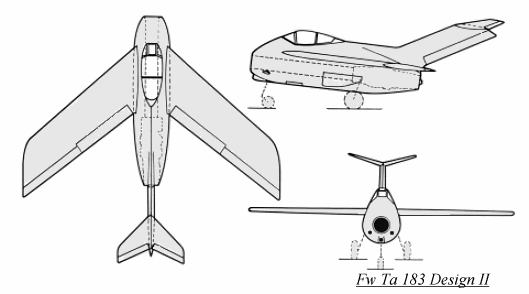
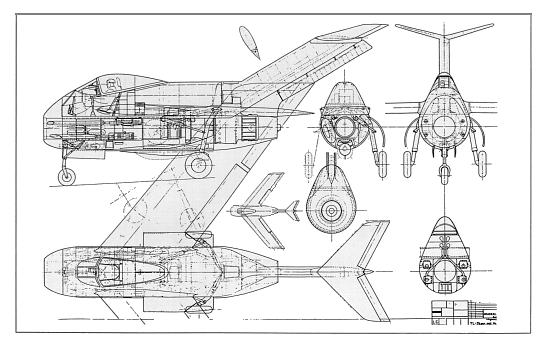
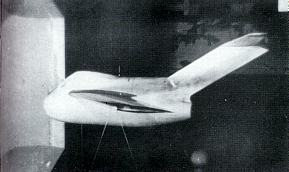

Windtunnel models of the Focke-Wulf Ta 183
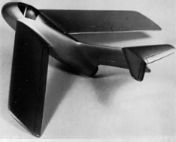

Another Ta 183 windtunnel model
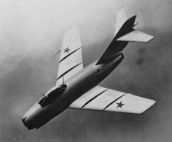

MIG 15
Além dos projetos que chegaram a serem produzidos durante a guerra, alguns outros serviram como base para alavancar os estudos e projetos soviéticos a americanos, inclusive na famosa série X, da Bell Aircraft Works. Os estudos alemães, sobre enflechamento das asas, estavam bem a frente dos de outros países.
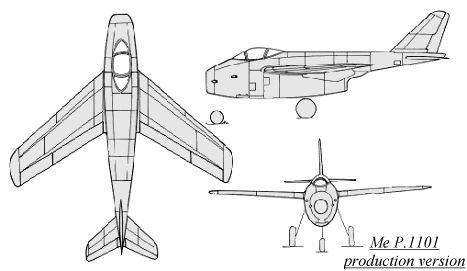

Messerschmitt Me P.1101
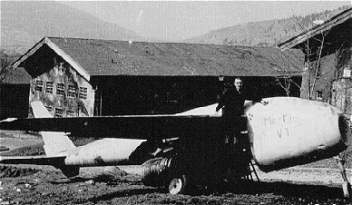

The Me P.1101, outside at the Messerschmitt Oberammergau complex
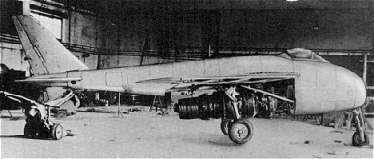

A good side view, showing the He S 011
mock-up engine installation
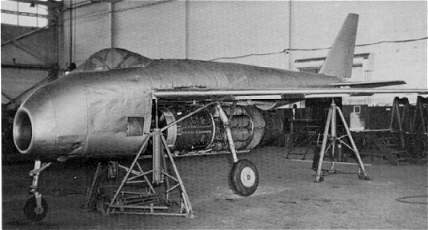

The Me P.1101 at Bell Aircraft Company in Buffalo, New York
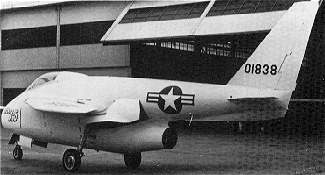

The first Bell X-5 prototype (50-1838) still in Buffalo, N.Y.
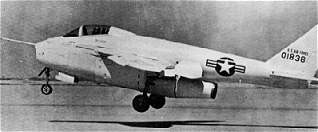

The Bell X-5 takes off for the first time from
Edwards AFB in California
Se a guerra tivesse se prolongado teríamos visto a antecipação do confronto entre jatos, com grande vantagem, no meu ponto de vista, para a Alemanha.
Quem quizer verificar quais eram os projetos alemães ao final da 2a Guerra é só dar um pulo neste site:
http://www.luft46.com/
Alguns projetos são tão avançados que parecem modernos até hoje!
Abraços









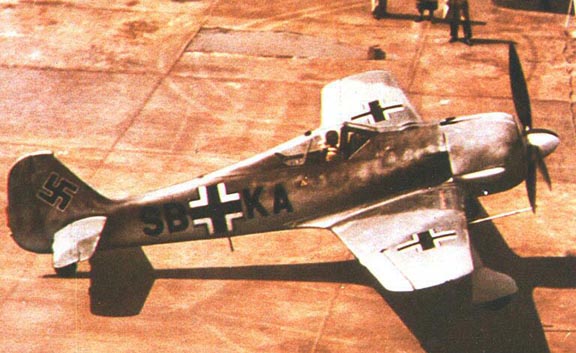


![[100]](./images/smilies/100.gif)






















